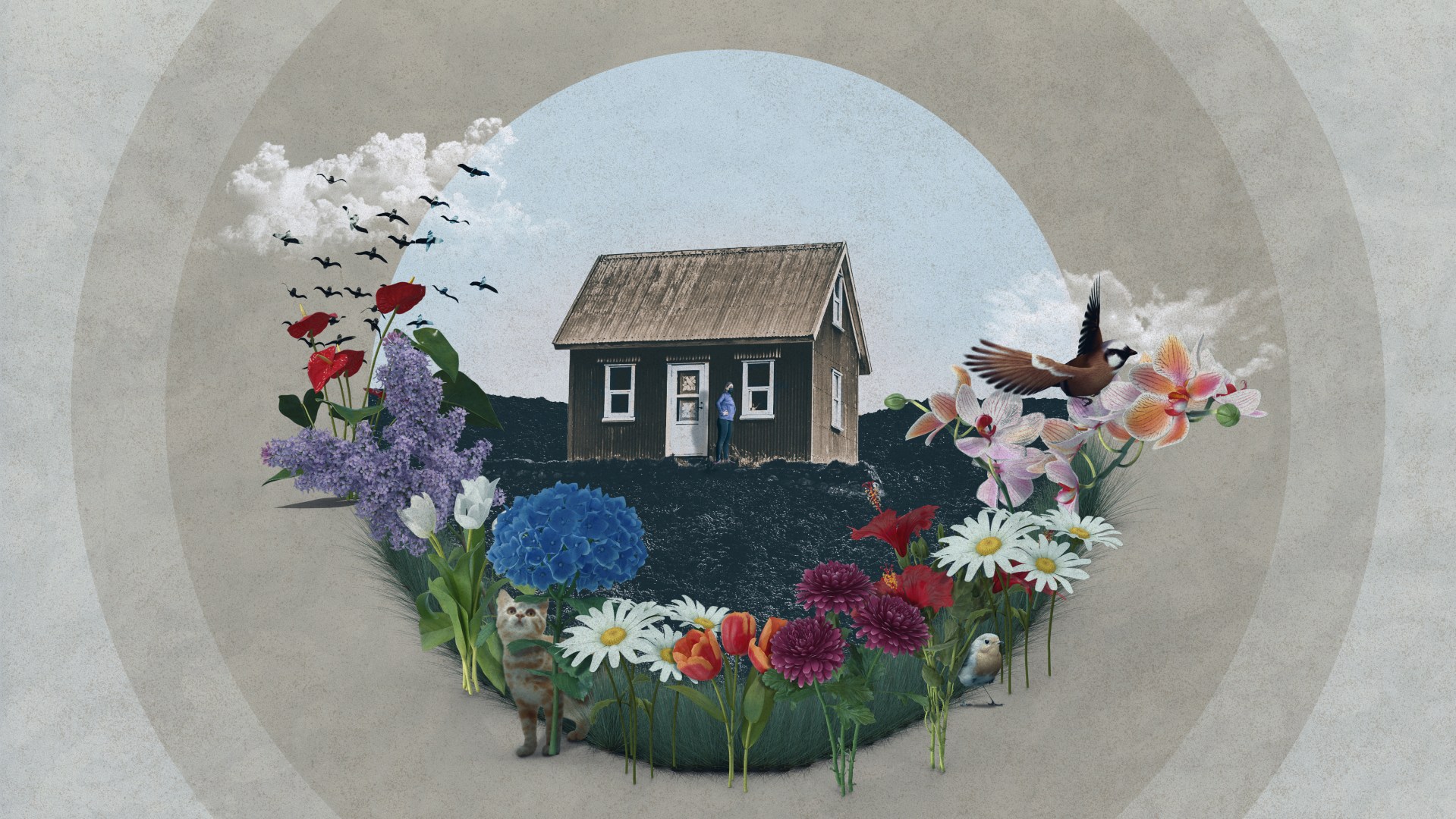This year’s Earth Day, unlike any other, feels at once expansive and restricted. As hundreds of millions of the earth’s citizens have been ordered to stay home for the greater good of our species, we live in isolated worlds that feel much too small. Perhaps this time of quarantine brings with it the opportunity to rediscover a sense of place and discover God’s creation anew.
The term “sense of place” has long been used by scientists and anthropologists to describe the meaningful relationship that can arise as a result of deep knowledge of and familiarity with a given place, and it applies to urban and rural settings alike. Having a sense of place can contribute toward deeper responsibility to care for creation and can motivate communities to join together in this common goal.
But acquiring a sense of place requires time and attention—something that Duke University professor Norman Wirzba says can come in short supply in contemporary life. Wirzba, who researches the intersection of ecology, theology, and philosophy, said in an interview that until the pandemic, a hurried, unsettled pace of life was a trademark of 21st-century life. “One of the ways to describe postmodernity is to say that we’re only rushing through places and not ever settling into any place.”
As a result, many of us aren’t even familiar with the everyday flora and fauna outside our front doors. Abbie Schrotenboer, professor of biology at Trinity Christian College, has noticed this same unfamiliarity in her science students. “I get a lot of people who don’t really know much about the local area, even if they’ve grown up in the Midwest.”
Part of the danger in neglecting a sense of place—and the local knowledge that comes with it—is that it becomes easier to take nature’s value for granted or deny it altogether. (Take, for instance, the Oxford Junior Dictionary’s recent removal of a host of biological terms and replacing them with words related to technology.)
There is something deeply Christian in the naming of things: It was one of God’s first commandments to Adam in the Garden of Eden (Gen. 2:19–20). But in neglecting a sense of place, there’s much more at stake than a dearth of plant knowledge. Identifying a sense of place is part of identifying a calling and naming the connection God asks us to have to the lands in which we dwell. Wirzba said that having a sense of place is crucial to understanding our own purposes as human beings. “If you don’t think you belong where you are, how do you sense that you still matter?”
In his book Our Only World, agrarian champion and Christian thinker Wendell Berry says a deep knowledge of a particular place is crucial to understanding how to steward it well. He uses the foresting industry as an example of what it means to belong to a place. After years spent in a particular forest, a forester comes to know the land so intimately that he can practice his trade without damaging the larger stock of trees. “It is the knowledge that tells one, in a given situation, where to look or what to expect or how much is enough. … This education is ‘observational,’ and it takes many years.” Eventually, this familiarity should lead to gratitude.
It’s key to remember that the ultimate aim of connecting with creation is connecting with the Creator; becoming more aware of our local natural surroundings can speak uniquely to us of God’s love. “Everything that exists, every creature, every place, is God’s love variously made visible, fragrant, tactile, auditory, and delicious,” Wirzba said. Being disconnected from creation, then, is not only unfortunate, but theologically dangerous. “We miss out on the larger meaning of this world in which we live.”
It’s also important to remember, especially in this time of quarantine, that connecting to nature doesn’t require field trips to exotic locales. To help her students build a better sense of place, Schrotenboer has taken both science students and nonmajors to investigate natural areas on the campus of Trinity and the surrounding neighborhood. This investigation includes everything from tallying plant species to setting up remote cameras to keep an eye on local wildlife. For Schrotenboer, even collecting water samples is a chance to wonder at the complexity of creation. “This helps us to monitor the water quality, but to also realize there are living things in there even when you don’t see them.”
Schrotenboer has noticed that for her students, paying attention to the most minute details in nature has deepened their own interests and curiosity and even inspired them to become involved in conservation efforts. “We’re kind of focused on the plants, but it turned out my students got really into finding fungi as well,” leading one student to photograph local fungi and upload the photos to the species’ Wikipedia page. Schrotenboer said the more we notice in our surroundings, the more we are in awe. “When you start to be able to identify and name things, it helps you appreciate all that is there, all the interconnections between different species and parts of the ecosystems.”
For many of us sheltering in place, this time presents an opportunity to slow down and take in our natural surroundings as never before. “It gives a great chance to get to know your own backyard,” Schrotenboer said. Though she acknowledged that not everyone has a yard to call their own, she also pointed out that even highly developed areas often offer parks or nature preserves to explore. She has found access to nature in suburban Chicago, where she currently lives. “When I first moved here, it was with a little bit of trepidation because I didn’t know what the area was like, but I’ve been really impressed by how many little nature reserves there are.”
Wirzba encourages city-dwellers to build a sense of connection with creation in any way they can. “I know it’s difficult when you’re in a city,” he said, “but you can do this even if you’re just growing a tomato plant in a window box.”
For those seeking resources to explore creation, Schrotenboer recommends the plant identification app Seek, which she uses with her students. She also noted that those unable to leave their homes at all can still deepen their sense of place through podcasts like But Why?, aimed at helping children explore the natural world.
She encourages all parents to kindle their children’s natural curiosity when taking walks. “I think a lot of it is just encouraging their natural instinct to explore and be willing to look at the little things. When they’re little, they focus on little tiny pebbles and things like that. Embrace that, whatever it is they want to explore.” Teaching our children to wonder at creation can be a chance to teach them more about God, too. And adults and children alike can be reminded through creation that God calls us to care for each other and share our resources, not to hoard them.
All of this time outdoors presents unique opportunities for Christians to take up the call to care for creation—engaging in citizen science, picking up litter on the trail, or investing in a pair of binoculars and taking up birding as a hobby. All of these things can deepen our sense of belonging to a place and impress upon us the responsibility we all carry for stewarding God’s earth.
In the same way, as we spend time in creation, we can recognize that creation is one of the ways God cares for us. A recent article in Nature shows a deep connection between spending time outdoors and having a sense of well-being. Now, more than ever, we need sources of beauty and hope, and Wirzba says creation can provide just that—if we pay attention. “The thing to do is to sit down and actually take a look at where you are,” Wirzba said. “What places are still producing beauty? It’s springtime, and things are blooming in a lot of parts of the country.”
For Schrotenboer, communing with creation is a way to draw closer to God, no matter what else is going on. “The more I appreciate creation,” she said, “the more I give glory to God as the Creator.”
Perhaps, if there is a spring rain on this Earth Day, we will even see a rainbow, the reminder of God’s faithfulness even in times of travail. “As long as the earth endures,” God instructed Noah, “seedtime and harvest, cold and heat, summer and winter, day and night will never cease” (Gen. 8:22). If we pay close attention, we can see the coming spring as a song of praise, a hymn to God’s faithfulness.
Elyse Durham is a writer in Detroit. Her work appears regularly in Christianity Today and has also been featured in America Magazine , the Cincinnati Review , and elsewhere.









